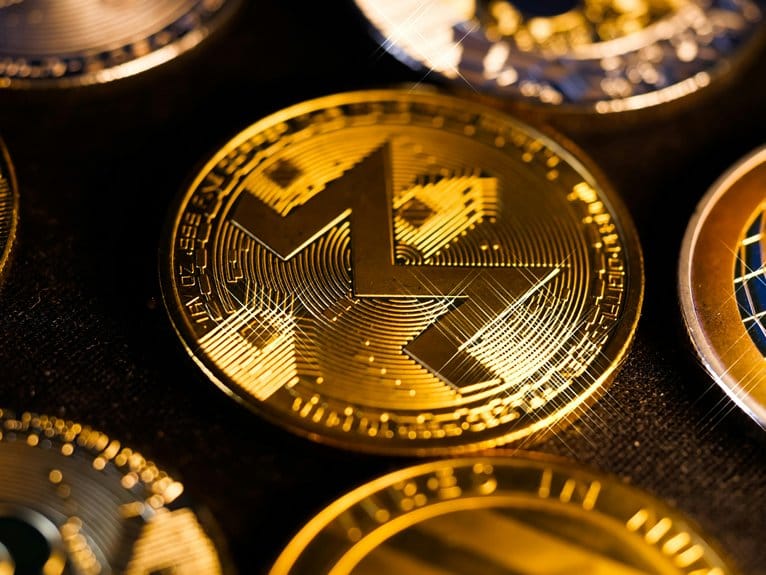Decentralized Physical Infrastructure Networks (DePIN) merge blockchain technology with real-world infrastructure to create autonomous, tokenized systems. These networks utilize smart contracts, token economics, and physical nodes to enable decentralized management of assets and services. Key components include a physical infrastructure layer, network protocols, and dual-token economics for incentivizing participation. Popular implementations like Helium Network and Hivemapper demonstrate practical applications across telecommunications, mapping, and environmental monitoring sectors. DePIN networks address traditional infrastructure challenges through democratic access, community governance, and sustainable resource allocation. The convergence of blockchain and physical infrastructure opens new frontiers in technological innovation and economic opportunities.
What Are DePIN Networks
DePIN networks, or Decentralized Physical Infrastructure Networks, merge blockchain technology with real-world physical infrastructure to create autonomous systems that operate without central authority.
These networks facilitate the tokenization and decentralized management of physical assets, enabling peer-to-peer interactions within infrastructure sectors like telecommunications, energy, and data storage.
A comprehensive depin networks overview reveals their core components: smart contracts governing operational rules, token economics incentivizing participation, and physical infrastructure nodes providing real-world utility.
The networks typically employ consensus mechanisms to validate infrastructure services and automate resource allocation, while cryptocurrency tokens serve as both governance tools and rewards for network contributors.
The depin technology implications extend beyond traditional infrastructure models, introducing new paradigms for asset ownership and service delivery.
By eliminating intermediaries and implementing transparent protocols, DePIN networks reduce operational costs and increase efficiency.
These systems enable direct marketplace interactions between infrastructure providers and users, creating self-sustaining ecosystems where service quality and network growth are naturally incentivized through tokenomics.
This architecture represents a significant evolution in how physical infrastructure can be deployed, maintained, and monetized in a decentralized framework.
Key Components of DePIN Systems
Breaking down a DePIN system reveals four essential components that work in concert to enable decentralized infrastructure operations.
The first component is the physical infrastructure layer, consisting of hardware devices and sensors that provide real-world services. This includes equipment like wireless hotspots, computing devices, or environmental sensors.
The second component is the network protocol layer, which manages communication and data flow between physical nodes while ensuring security and reliability. This layer implements consensus mechanisms and validates network participation.
The third component encompasses smart contracts and token economics, which create incentive structures for network participants and govern resource allocation.
The fourth component is the service layer, where actual utility is delivered to end-users through applications and interfaces. This layer translates the infrastructure decentralization into practical services, whether internet connectivity, computational power, or sensor data.
These components are interdependent, with the token economic model serving as the binding agent that aligns participant interests and ensures network sustainability. Each component must be carefully designed to maintain system integrity while delivering reliable services through decentralized means.
Popular DePIN Projects Today
Several pioneering projects have successfully implemented the core components of decentralized physical infrastructure networks, gaining significant traction in the blockchain ecosystem.
Helium Network stands as a prominent example, creating a decentralized wireless infrastructure for IoT devices through user-operated hotspots. The network utilizes tokenized assets to incentivize participant deployment and maintenance of physical infrastructure.
Another notable project is Hivemapper, which builds decentralized mapping infrastructure through a network of driver-mounted cameras collecting geographic data. Contributors earn tokens for gathering and validating mapping information.
Similarly, WeatherFlow operates a decentralized network of weather stations, enabling more accurate local weather data collection through community-operated sensors.
In the computing sector, Render Network has established a decentralized GPU rendering system, allowing artists and designers to access distributed rendering power. The platform connects GPU providers with users requiring rendering services, creating an efficient marketplace for computational resources.
These projects demonstrate the practical implementation of decentralized infrastructure across various sectors, from telecommunications to environmental monitoring, establishing new paradigms for community-owned physical infrastructure development.
Economic Model Behind DePIN
The economic foundation of decentralized physical infrastructure networks rests on a dual-token model that aligns incentives between infrastructure providers and network users. In this model, utility tokens facilitate network transactions and governance tokens enable decentralized decision-making. This structure creates a self-sustaining ecosystem where value creation is directly tied to network participation and growth.
Infrastructure providers earn rewards through multiple mechanisms, including token emissions, transaction fees, and revenue sharing from network services. These reward mechanisms are designed to ensure economic sustainability while maintaining service quality. The utility token's primary function is to facilitate seamless transactions within the network, while also serving as a medium of exchange between service providers and users.
Decentralized governance plays a crucial role in maintaining the network's economic health through community-driven decisions on token economics, reward distributions, and network upgrades. The incentive structures are carefully calibrated to prevent manipulation and encourage long-term commitment from stakeholders.
This economic framework enables DePIN networks to achieve scalability while maintaining operational efficiency and ensuring fair value distribution among participants.
Real-World Applications and Impact
DePIN networks have revolutionized three key sectors through practical applications: telecommunications, energy distribution, and data storage infrastructure. Through decentralized infrastructure protocols, these networks enable communities to build and maintain essential services while ensuring greater infrastructure resilience and operational efficiency.
In telecommunications, DePIN facilitates the creation of community-owned wireless networks where participants contribute bandwidth and hardware resources in exchange for tokenized assets.
Energy distribution networks leverage DePIN to enable peer-to-peer power trading, optimizing grid efficiency through real-time data monitoring and automated smart contracts.
Data storage infrastructure has been transformed through decentralized networks that distribute storage capacity across multiple nodes, enhancing data security and reducing dependency on centralized providers.
The impact extends beyond operational improvements, fostering environmental sustainability through optimized resource allocation and reduced energy waste.
Community engagement plays a crucial role, as stakeholders actively participate in network governance and maintenance. This participatory model ensures better alignment between infrastructure development and local needs, while creating economic incentives for long-term infrastructure maintenance and technological advancement.
Future Growth and Opportunities
Emerging trends point to exponential growth potential for decentralized physical infrastructure networks across multiple sectors by 2030.
As traditional infrastructure systems face mounting pressure from urbanization and resource constraints, DePIN networks offer scalable solutions that can address these challenges while maintaining decentralized governance structures.
Market analysis indicates significant investment trends toward DePIN projects, particularly in telecommunications, energy distribution, and sensor networks.
Venture capital firms are increasingly allocating resources to startups developing blockchain-based infrastructure solutions, recognizing the potential for substantial returns as these networks mature.
However, scalability challenges remain a critical consideration, as networks must balance throughput requirements with decentralization principles.
To capitalize on future opportunities, DePIN networks are focusing on interoperability protocols and cross-chain solutions.
This approach enables seamless integration between different infrastructure networks while maintaining security and efficiency.
The development of layer-2 scaling solutions and improved consensus mechanisms will be crucial in addressing current technical limitations.
Industries such as smart cities, autonomous vehicles, and distributed energy systems represent key growth areas where DePIN networks can provide innovative infrastructure solutions while ensuring democratic access and control.
Frequently Asked Questions
How Secure Are the Physical Devices Connected to Depin Networks?
Device security in DePIN-connected hardware varies significantly, with network vulnerabilities dependent on physical access controls, data privacy protocols, and implemented security measures across individual nodes and endpoints.
What Happens if Internet Connectivity Fails in a Depin System?
DePIN systems typically implement internet redundancy protocols with connectivity alternatives like mesh networks, satellite connections, or cellular backups to maintain operations during primary network outages.
Can Traditional Businesses Easily Transition Their Infrastructure to Depin Networks?
Business adaptation to DePIN requires systematic infrastructure integration, involving technical upgrades, staff training, and blockchain implementation. While challenging, phased transitions can facilitate smoother operational transformation.
How Are Disputes Between Depin Network Participants Resolved?
Dispute resolution in decentralized networks typically follows predefined participant agreements, utilizing smart contracts, automated arbitration mechanisms, and community governance protocols to address conflicts between network stakeholders systematically and transparently.
What Regulatory Challenges Do Depin Projects Face in Different Countries?
DePIN regulations vary globally, with projects navigating complex legal frameworks, jurisdictional issues, licensing requirements, tax implications, privacy concerns, and consumer protection measures across different regulatory environments and compliance standards.
Conclusion
Decentralized Physical Infrastructure Networks (DePIN) represent a transformative integration of blockchain technology with real-world infrastructure deployment. Through tokenized incentive mechanisms and distributed governance models, DePIN systems demonstrate significant potential for revolutionizing traditional infrastructure development. As blockchain technology matures and adoption increases, DePIN networks are positioned to drive innovation across sectors including telecommunications, energy, and transportation, ultimately creating more efficient and accessible infrastructure solutions globally.





